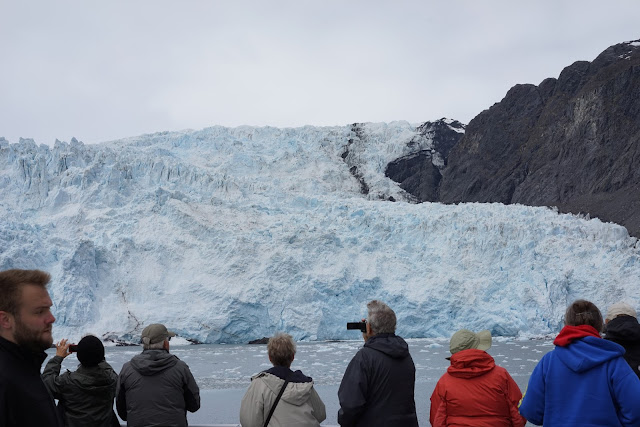One of the cool things about Alaska is all of the names. Kenai, Knik, Eklutna, Aialik. There are a number of dialects that the indigenous people of Alaska use. Inupiaq. Alutiiq. Yupik. Aleut. Tlingit. Eyak. Athabaskan. Haida. Tsimsihan. And that's only if I have it right...I am sure there are others, and in some cases the spelling of those listed may not be traditional. As someone who loves words...these are beautiful words. I love the sound of Eklutna, and Aialik. I wanted to know the meaning, but these are dying languages. A google search will not tell me what Aialik means. Finding out will have to go on my to do list. If the words are Inupiaq there are roughly 8,000 people left who speak the language. If it comes from Tlingit, my odds drop considerably as there are only 500 people estimated to speak the language today. What a shame it would be to lose the meaning of these words. If I find out, you can be sure I will spread the news. (Update from a reader, Joseph Peterson " On the Kenai Fjords tour last week, our Captain, Chris, told us that Aialik means something along the lines of "dangerous, fearful, place to be respected." He said that no matter what is happening on either side, Aialik point will have rougher seas as you turn the corner." Thank you Joseph for sharing that!)
To the left of the larger Aialik Glacier sits another glacier. One might wonder how old these glaciers are. Again, this is not common fodder on the internet. I am sure that samples exist in the geological ice bank (which is located in Denver, Colorado if you are interested), and those samples are likely dated. But the tours do not state how old this ice is. They know it was here, and much more far reaching as far back as the 1600's. But that is all I can find documented. It must be ancient. I did find that the Antarctic Ice Sheet dates back 40 Million Years. So this is somewhere between 400 and 40,000 years old. They really need a better brochure with more details!
As a size perspective, here are some of the heads that were in my way as I tried to photograph the glacier. We are several hundred feet away from the base...so basically, it's pretty big.
A happily headless shot of the Aialik Glacier. It was really hard to bring out the shade of blue that you could see in the deeper crevices where the ice is more compressed.
Not exactly Titanic, but there were loads of mini icebergs surrounding the boat. They fished one out so we could feel glacial ice. Pretty much like an ice cube but bigger...but there is something to be said for having an authentic experience so it was a little more special than just an ice cube.
We did get to experience that fabulous moment where the glacier "calves." Usually the warmer water erodes the base of the glacier below the surface of the water. The weight of the overhanging structure eventually reaches a point where gravity take over and it shears off the face of the glacier. You hear a loud crack and a roar as some of the ice gives way and rushes down the front of the glacier. The experience is captured perfectly below, where you can imagine what it looks like if that head were anywhere but directly in front of me. Have I ever mentioned that I hate crowds? And yes, it really was cold enough to mittens and toques in May at the Glaciers...that is eons of cold you are standing in front of.
Once all the action was over, the heads went inside where it was warm and I got a couple of nice, quiet, sadly uneventful pictures of the glaciers before we left.
So this was the halfway point of our journey. And now it was time to retreat from the retreating glacier, and return to Seward.











No comments:
Post a Comment